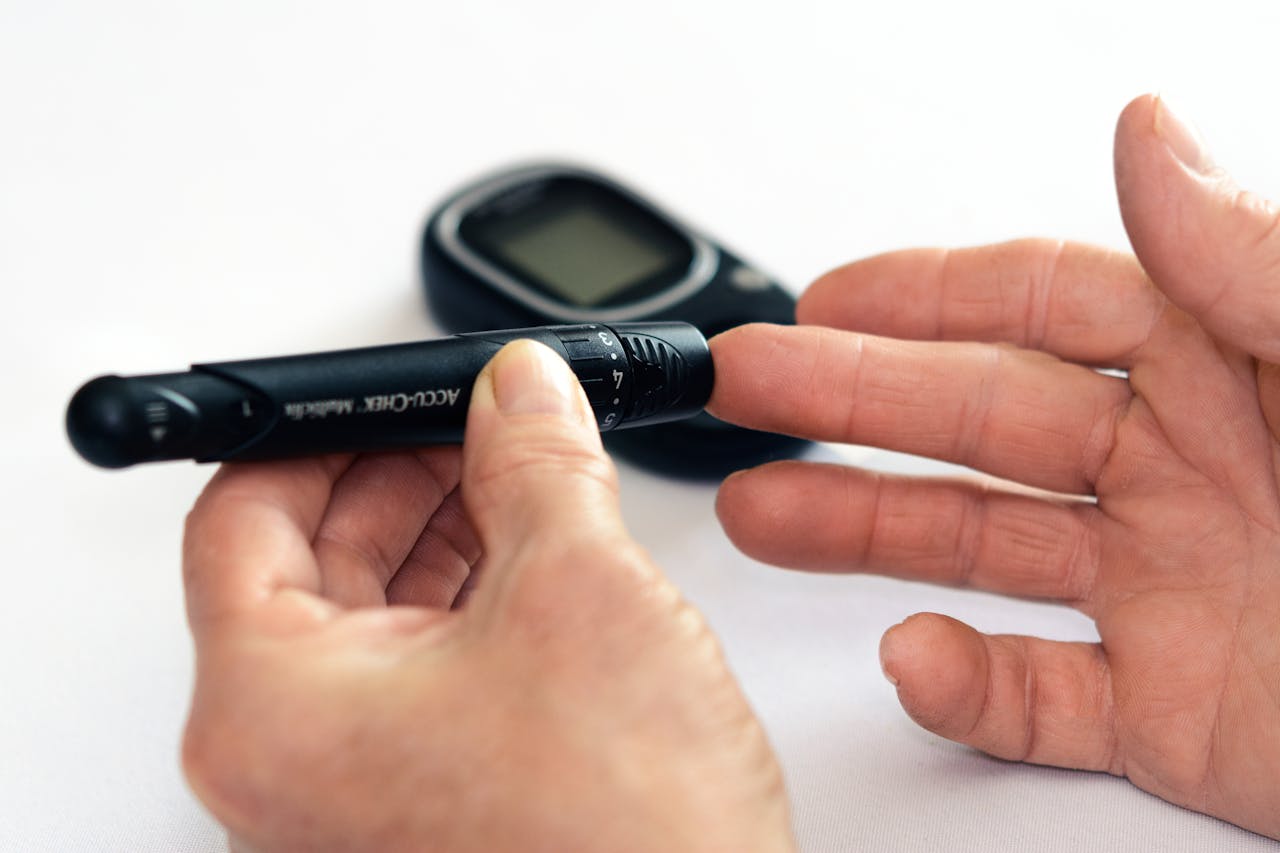
Prediabetes is a growing concern in the United States, with over 88 million adults diagnosed with it. This condition often goes unnoticed because it doesn’t show obvious symptoms. However, the good news is that prediabetes can be reversed with the right lifestyle changes.
In this article, we’ll explore steps you can take today to reverse prediabetes, control your blood sugar levels, reduce insulin resistance, and follow a prediabetes diet. These changes are practical, sustainable, and effective.
What is Prediabetes?
Prediabetes occurs when your blood sugar levels are higher than normal but not yet high enough to be diagnosed as type 2 diabetes. It is often linked to insulin resistance, where your body’s cells become less responsive to insulin, the hormone that regulates blood sugar levels.
Key Signs and Symptoms of Prediabetes
While prediabetes may not show symptoms, some signs include:
- Increased thirst or urination
- Fatigue
- Blurred vision
- Slow healing of cuts or wounds
- Darkened skin in areas like the armpits or neck
Understanding the early signs of prediabetes can help you take preventive action before it progresses to type 2 diabetes.
Understand Insulin Resistance
The cornerstone of prediabetes is insulin resistance. When your cells become resistant to insulin, your body needs to produce more to keep blood sugar levels in check. Over time, this can lead to higher blood sugar levels, which is the hallmark of prediabetes.
How Insulin Resistance Affects Your Body
Blood Sugar Control: Insulin resistance means your body struggles to keep blood sugar levels stable.
Weight Gain: Insulin resistance often leads to weight gain, especially around the abdominal area, making it harder to control blood sugar levels.
Higher Risk for Heart Disease: Insulin resistance is also linked to an increased risk of cardiovascular disease.
Understanding how insulin resistance works is key to reversing prediabetes and managing blood sugar control effectively.
The Importance of a Prediabetes Diet
A prediabetes diet plays a significant role in managing blood sugar levels and reducing insulin resistance. By choosing foods that support healthy blood sugar levels, you can dramatically lower your risk of progressing to type 2 diabetes.
Foods to Include in a Prediabetes Diet
- High-Fiber Foods: Vegetables, fruits, and whole grains
- Lean Proteins: Chicken, fish, and legumes
- Healthy Fats: Olive oil, avocados, and nuts
- Low Glycemic Index Foods: Foods that have a low glycemic index (GI) are absorbed more slowly, preventing rapid spikes in blood sugar. Examples include whole grains, leafy greens, and sweet potatoes.
Foods to Avoid
- Processed sugars and refined carbs (white bread, pastries, etc.)
- Sugary drinks and sodas
- High-fat processed foods
Glycemic Index and Blood Sugar Control
One of the most important aspects of a prediabetes diet is understanding the glycemic index (GI) of foods. The glycemic index measures how quickly a food increases your blood sugar. The lower the GI, the slower the rise in blood sugar.
| Food | Glycemic Index |
| Whole Wheat Bread | 69 |
| Brown Rice | 50 |
| Sweet Potato | 44 |
| White Bread | 75 |
| White Rice | 73 |
Opt for low-GI foods like brown rice, legumes, and leafy greens for better blood sugar control.
Regular Physical Activity
Physical activity is one of the most effective ways to reduce insulin resistance. Exercise helps your body use insulin more efficiently, which can help lower your blood sugar levels and improve overall health.
Recommended Types of Physical Activity
- Aerobic Exercise: Walking, jogging, swimming, or cycling. These exercises help your body burn sugar for energy, improving blood sugar control.
- Strength Training: Lifting weights or resistance training can increase muscle mass, which helps improve insulin sensitivity.
- Flexibility Exercises: Yoga or stretching can improve circulation and reduce stress, which is essential for overall health.
Aim for at least 150 minutes of moderate aerobic exercise per week, combined with two days of strength training.
Achieve and Maintain a Healthy Weight
Being overweight is one of the primary risk factors for developing insulin resistance. Reducing body fat can help lower blood sugar levels and improve insulin sensitivity.
How Weight Loss Affects Blood Sugar Control
Losing even a small amount of weight (5-10% of your body weight) can have a significant impact on blood sugar control and may help reverse prediabetes.
Monitor Blood Sugar Levels Regularly
Regular monitoring of your blood sugar levels is crucial in understanding how your lifestyle changes are affecting your health. You can track your blood sugar control at home with a glucometer or through a continuous glucose monitor (CGM).
What to Look for When Monitoring Blood Sugar
- Aim for fasting blood sugar levels below 100 mg/dL.
- Two hours after eating, your blood sugar should be less than 140 mg/dL.
Tracking these numbers regularly can help you stay on track and adjust your diet or exercise routine as needed.
Manage Stress to Improve Blood Sugar Control
Chronic stress leads to elevated cortisol levels, which can raise blood sugar and worsen insulin resistance. Reducing stress through relaxation techniques is crucial for managing blood sugar and improving insulin sensitivity.
Effective Stress Management Techniques:
Deep Breathing: Helps lower cortisol and promotes relaxation. Practice slow, deep breaths for 5-10 minutes daily.
Mindfulness Meditation: Reduces anxiety and cortisol production. Spend 10 minutes focusing on your breath and present moment.
Yoga: Combines movement and breathing to reduce stress and improve insulin sensitivity.
Progressive Muscle Relaxation: Tense and relax muscle groups to release physical stress.
Managing stress effectively can prevent blood sugar spikes, improve insulin sensitivity, and support overall health. Incorporating these techniques daily is a powerful step in reversing prediabetes and improving blood sugar control.
Get Enough Sleep to Improve Blood Sugar Control
Sleep is often underestimated, yet it plays a crucial role in maintaining blood sugar control and managing insulin resistance. Chronic sleep deprivation or poor-quality sleep can significantly disrupt your body’s ability to regulate blood sugar levels, increasing the risk of developing type 2 diabetes.
How Sleep Affects Insulin Sensitivity
Sleep directly influences insulin sensitivity, the body’s ability to respond to insulin. Poor or insufficient sleep increases insulin resistance, making it harder to manage blood sugar. Studies have shown that when you get less than 7 hours of sleep per night, your body becomes less efficient at processing glucose, leading to higher blood sugar levels.
Optimal Sleep Duration for Blood Sugar Regulation
To support proper blood sugar regulation, aim for 7-9 hours of quality sleep each night. Consistent, restful sleep helps improve insulin sensitivity, reduces cortisol, and enhances overall health, making it a vital part of reversing prediabetes.
Consider Supplements (With Caution)
Certain supplements may help support blood sugar control and improve insulin sensitivity. Some of the most researched supplements include:
- Cinnamon: May help improve insulin sensitivity.
- Magnesium: Deficiency in magnesium is linked to insulin resistance.
- Berberine: A compound that has been shown to lower blood sugar levels in people with type 2 diabetes.
However, always consult with a healthcare provider before taking supplements to ensure they are safe and effective for your situation.
Stay Hydrated to Support Blood Sugar Control
Staying hydrated is often overlooked, but it plays an essential role in blood sugar regulation. Drinking enough water helps maintain healthy blood sugar levels and supports overall metabolic function. Dehydration, on the other hand, can have a negative impact on your body’s ability to regulate glucose, causing blood sugar levels to rise.
How Hydration Affects Blood Sugar
When you’re dehydrated, your blood becomes more concentrated, which leads to higher blood sugar levels. Proper hydration helps your kidneys flush out excess sugar through urine, promoting healthier blood sugar control. Studies have also shown that drinking water regularly may help lower the risk of developing type 2 diabetes.
How Much Water Should You Drink?
Aim for at least 8 cups (64 ounces) of water per day. If you’re physically active or live in a hot climate, you may need more. Hydrating consistently throughout the day ensures that your body remains balanced and supports better insulin sensitivity.
Consult a Healthcare Provider
While lifestyle changes are important, it’s crucial to work with a healthcare provider who can monitor your progress. Regular check-ups will help you assess the effectiveness of your plan, adjust medications if necessary, and guide you in managing insulin resistance.
Social Support and Accountability
Having a support system can make it easier to stick to your health goals. Whether it’s a family member, friend, or online community, sharing your journey with others can boost motivation and keep you accountable.
Stay Consistent and Patient
Reversing prediabetes doesn’t happen overnight. It requires consistent effort and patience. Celebrate small wins, and keep pushing forward.
Conclusion
Reversing prediabetes is possible with the right steps and lifestyle changes. By focusing on a healthy diet, regular physical activity, and managing blood sugar control, you can effectively reduce insulin resistance and prevent the progression to type 2 diabetes.
At Health Connect Daily, we’re committed to providing you with the latest insights and strategies to live a healthier life. Start today, and take control of your health!
FAQs
1. Can prediabetes be reversed naturally?
Yes, prediabetes can often be reversed with lifestyle changes, including a healthy diet, regular physical activity, stress management, and adequate sleep. These steps can improve insulin sensitivity and help normalize blood sugar levels.
2. What foods should I avoid with prediabetes?
Avoid foods that are high in refined sugars and processed carbohydrates, such as sugary drinks, white bread, pastries, and fast food. Instead, focus on whole grains, lean proteins, healthy fats, and low-GI vegetables to support blood sugar control.
3. How much physical activity do I need to manage prediabetes?
Aim for at least 150 minutes of moderate aerobic exercise per week (e.g., walking or cycling), along with strength training twice a week. Regular exercise helps improve insulin sensitivity and control blood sugar levels.
4. How does stress affect blood sugar levels?
Chronic stress increases cortisol levels, which can elevate blood sugar and worsen insulin resistance. Practicing relaxation techniques like deep breathing, meditation, and yoga can help manage stress and improve blood sugar control.
5. How much water should I drink to manage blood sugar?
To help regulate blood sugar levels, aim for at least 8 cups (64 ounces) of water per day. Staying hydrated helps flush excess sugar from your bloodstream and supports overall metabolic function.
